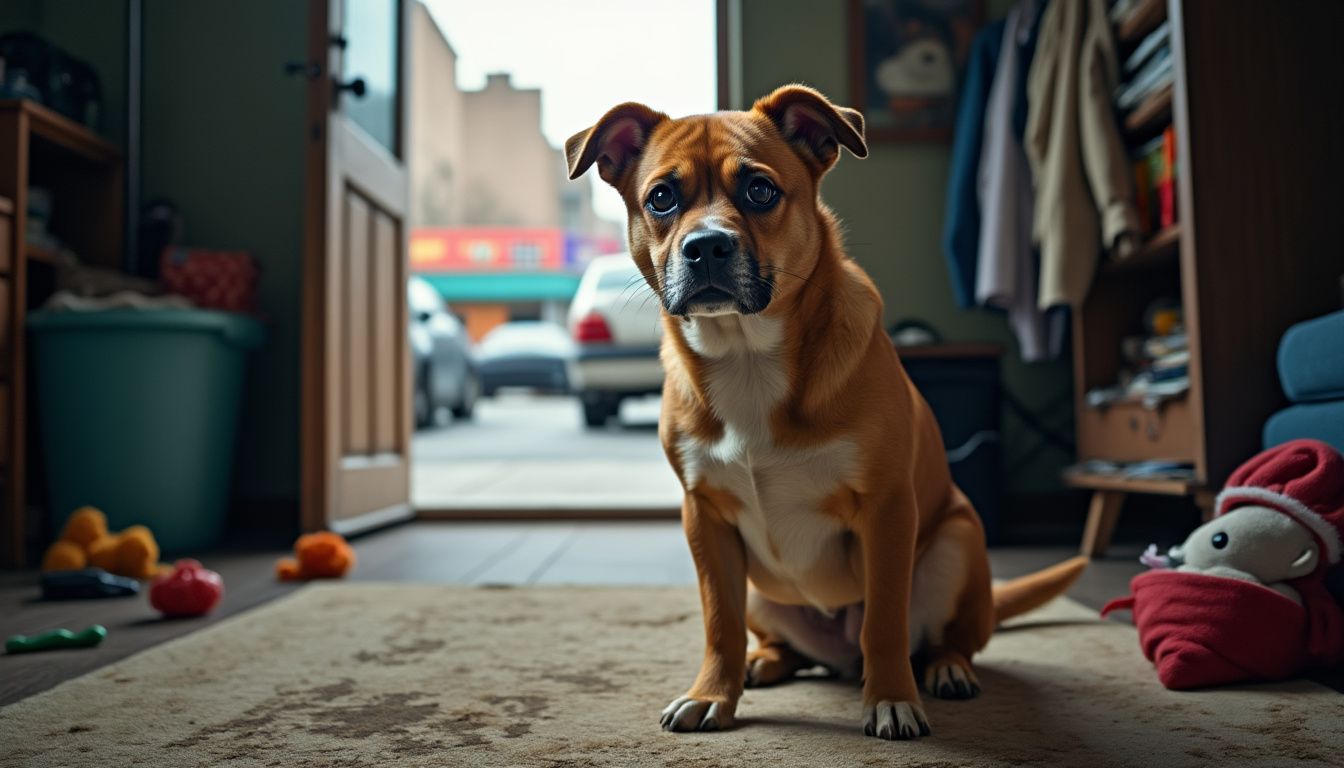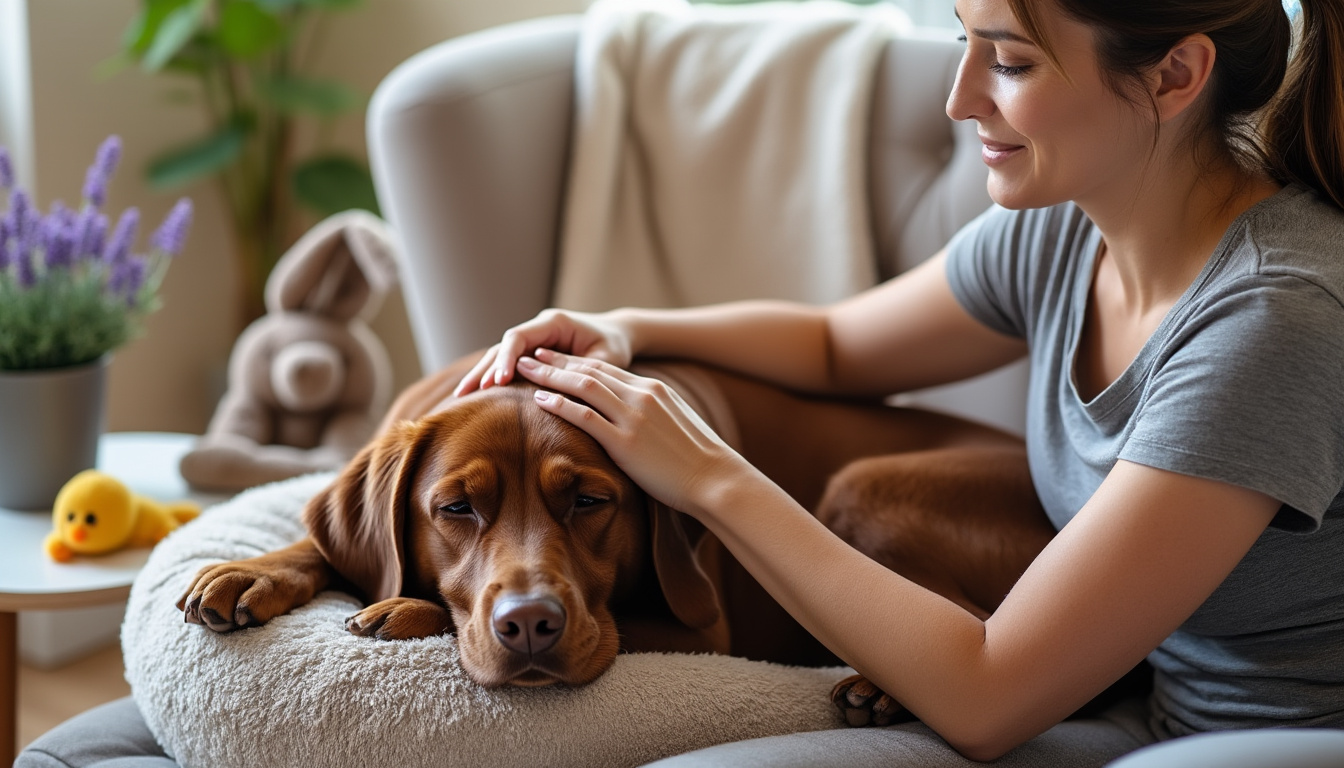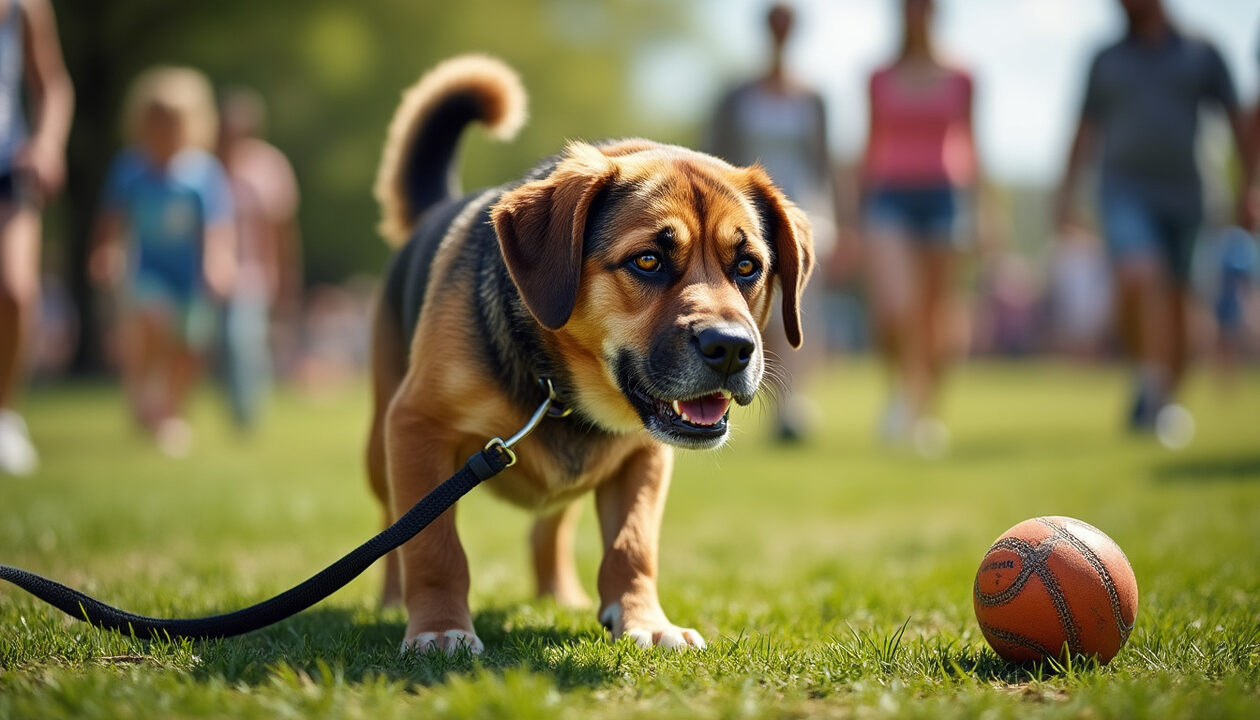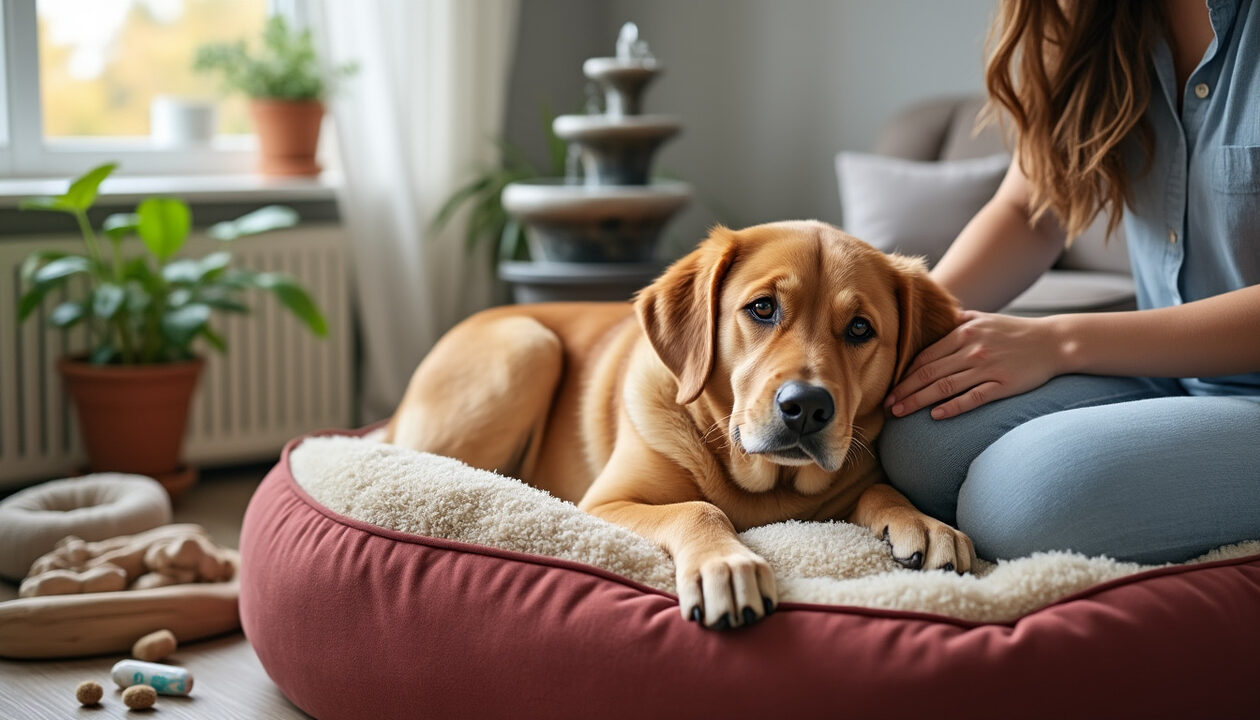What are the techniques to calm a stressed dog?
Dogs, these loyal companions, can sometimes experience moments of stress that harm their well-being. Understanding the roots of this stress is essential to better support them. Whether it involves new situations, loud noises, or a change in routine, various factors can contribute to canine anxiety. This article will be your guide to discovering different methods and techniques to soothe a stressed dog. We will discuss the signs to observe, natural remedies like anti-stress collars for dogs or herbal blends for dogs, as well as the importance of proper education. Each section will present concrete solutions, allowing you to improve the quality of life of your faithful companion.
Understanding Stress in Dogs
To better soothe a stressed dog, it is essential to understand where this stress comes from. Dogs, just like humans, are sensitive to their environment and can react differently to various stimuli. A sudden change, a bad experience, or even the prolonged absence of their owner can generate significant anxiety.

The Origins of Canine Stress
Stress in dogs can be triggered by various elements. Among them, the environment plays a crucial role.
- Change of home: A move, for example, can unsettle the dog and plunge it into a stressful period.
- Introduction of new animals or family members: Dogs are territorial creatures and may find it difficult to adapt.
- Changes in routine: Prolonged absence of the owner, a change in walking or feeding schedules can be anxiety-inducing for them.
Signs of Anxiety in Your Companion
To act quickly, it is crucial to detect signs of anxiety in your pet. These indications can vary from one dog to another, but certain behaviors are often revealing:
- Unusual agitation or hyperactivity: A more nervous behavior than usual may indicate discomfort in your dog.
- Excessive barking: If your dog is barking unusually, it may be a warning sign.
- Decreased appetite: A stressed dog might lose its joy in life, often reflected by a refusal to eat.
- Destructive behaviors: Scratching, chewing on objects, or urinating inside the house can also indicate emotional distress.
Recognizing these symptoms will allow you to act quickly and foster a serene environment for your companion.
Relaxation Techniques for Dogs
Once the stress is identified, it is time to explore relaxation techniques for dogs that will help you effectively soothe your pet. Sometimes, it is not just about medications or calming products for dogs, but rather behavioral methods that can make a real difference.

Behavioral Techniques
Behavioral techniques are essential strategies for achieving lasting calm in dogs. Here are some of the most powerful:
- Desensitization: This method involves gradually exposing your dog to stress-inducing stimuli while rewarding them with treats whenever they remain calm.
- Counter-conditioning: Associating neutral or pleasant events (like games or treats) with stressful situations to encourage positive responses.
- Regular exercise: Make sure your dog has enough energy to release. Regular walks and stimulating games are perfect for reducing stress.
Use of Calming Products
In some situations, calming products for dogs can be helpful. The use of a Zylkène for dogs or an Adaptil diffuser can promote your companion’s serenity. These products are designed to create a calming atmosphere around the dog and contribute to its well-being:
- Anti-stress collars for dogs: These collars release calming pheromones, helping to reduce anxiety.
- Herbal blends for dogs: Some herbal supplements, such as valerian or chamomile, can be added to their diet.
- Anti-stress medication for dogs: In cases of intense and persistent stress, it might be wise to consult a veterinarian who can advise on suitable medications.
The Role of Anti-Stress Education
Education plays a crucial role in managing stress in dogs. Establishing clear rules and expectations can help reinforce a sense of security in your pet. Teaching your companion to adopt relaxed behaviors is a vital process.
Positive Reinforcement
An excellent anti-stress education method relies on positive reinforcement, which involves rewarding desired behaviors. This can help boost your dog’s confidence and mitigate anxious behaviors:
- Using treats to reward calm and relaxed behaviors.
- Encouraging positive play and interactions with other animals.
- Creating a lifting environment: Make a pleasant setting where your dog feels safe and heard.
Toys and Distractions
Toys play an essential role in managing anxiety.
- Interactive toys that mentally stimulate the dog, such as push or tug-of-war games.
- Food puzzles that keep your dog occupied while having fun.
- Soft plush toys for a comforting effect.
These distractions can help reduce anxiety by occupying the dog’s mind and providing a source of comfort.
Well-Being and Nutrition
An often overlooked aspect of canine stress is nutrition. Ensuring your dog receives a balanced and suitable diet can significantly contribute to its mental and physical well-being. There are various calming dog foods that you can incorporate into their diet.
Balanced Nutrition
Nutrition plays a crucial role in combating stress. Provide your companion with a rich and balanced diet that will improve its overall well-being. Include elements such as:
- High-quality proteins to support muscle health.
- Omega-3 fatty acids for their beneficial effects on mood.
- Fiber to promote good digestion.
These dietary elements are beneficial for the immune system and help alleviate anxiety in your pet.
Hydration and Attention
Don’t forget to ensure adequate hydration. Fresh, clean water must always be accessible. Additionally, spending time with your dog plays a major role in reducing stress. Show him affection and spend quality time together. A simple cuddle can soothe a stressed dog.
| Technique | Objective | Examples |
|---|---|---|
| Desensitization | Gradual exposure to stress-inducing stimuli | Walk in a noisy place gradually |
| Counter-conditioning | Associate stress with positive | Give a treat every time meeting another dog |
| Use of calming products | Promote calmness and serenity | Collars and pheromone diffusers, Zylkène |
Your dog deserves a fulfilling, stress-free life. By applying these strategies, you will greatly contribute to his happiness and well-being. Don’t hesitate to explore further the methods that work for you and your pet.




